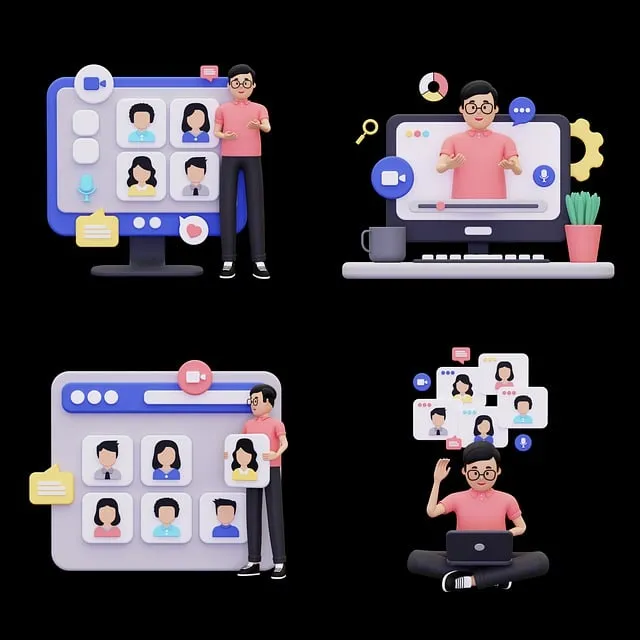Stealthy Web Surfing (anonymous browsing) is a double-edged sword for marketing managers: a powerful tool for maintaining online privacy and gathering consumer insights, but also a security risk and an ethical concern when misused by malicious actors. By employing encrypted connections, VPNs, and understanding tracking techniques, marketing professionals can conduct secure market research while respecting data protection laws and user privacy, thereby fostering trust and brand reputation in the digital era.
In the shadows of the digital realm, anonymous web browsing thrives, particularly within hackers’ communities. This enigmatic practice, often cloaked in terms like ‘stealthy web surfing’, involves navigating the internet without leaving traces, posing significant privacy and security challenges. Marketing managers must understand these trends to adapt strategies. The article explores how hackers utilize this technique for communication and data exchange, delving into tools, techniques, and ethical implications, offering a comprehensive guide for staying informed in today’s complex online landscape.
- Understanding Anonymous Browsing: The Basics and Privacy Concerns
- How Hackers' Communities Utilize Stealthy Web Surfing for Communication and Data Exchange
- Tools and Techniques: Navigating the Dark Web Anonymously
- Ethical Implications: Balancing Privacy, Security, and Legal Boundaries for Marketing Managers
Understanding Anonymous Browsing: The Basics and Privacy Concerns

Anonymous web browsing, also known as stealthy web surfing, is a practice where internet users employ specialized tools and techniques to mask their digital identities while online. This method allows individuals to traverse the web without leaving traceable information, ensuring a level of privacy and anonymity. For hackers’ communities, this technique is paramount; it enables them to communicate, share information, and execute activities without fear of detection or tracking by law enforcement or targeted organizations.
While anonymous browsing offers enhanced privacy for legitimate users, such as marketing managers seeking discreet market research, it raises significant concerns regarding online security and ethical considerations. The very tools designed to protect user anonymity can also be exploited by malicious actors to facilitate cybercrime, data theft, or spreading misinformation. Thus, it’s crucial for internet users to understand the implications of anonymous browsing and employ these tools responsibly.
How Hackers' Communities Utilize Stealthy Web Surfing for Communication and Data Exchange

Tools and Techniques: Navigating the Dark Web Anonymously

In the realm of anonymous web browsing, hackers’ communities leverage a multitude of tools and techniques to ensure their digital footprints remain hidden. The Dark Web, often shrouded in mystery, presents a complex network where privacy is paramount. Marketing Managers, while not typically engaged in hacking, can draw insights from these stealthy practices for more ethical purposes, such as enhancing online privacy and security.
Navigating the Dark Web anonymously involves sophisticated methods like Tor browsers, which route internet traffic through multiple encrypted layers, concealing IP addresses. Additionally, cryptographic tools like VPNs (Virtual Private Networks) further obfuscate user identities. These measures ensure that even if data leaves a digital trail, it’s nearly impossible to trace back to the original user, fostering a sense of anonymity akin to Stealthy Web Surfing for Marketing Managers seeking to protect sensitive information or conduct competitive intelligence.
Ethical Implications: Balancing Privacy, Security, and Legal Boundaries for Marketing Managers

Marketing managers who engage in stealthy web surfing must navigate a complex landscape of ethical considerations, privacy rights, and legal boundaries. While anonymous browsing can offer valuable insights for understanding online trends and consumer behavior, particularly within hacker communities, it raises significant concerns about data protection and consent. On one hand, the internet’s open nature enables individuals to explore and gather information freely; on the other, this unrestricted access has led to increased privacy breaches and security threats.
For marketing professionals, striking a balance between safeguarding sensitive consumer data and leveraging anonymous browsing techniques is crucial. This delicate act involves adopting secure online practices, understanding relevant laws, and respecting individual privacy. By embracing ethical guidelines and transparent data-handling strategies, marketing managers can harness the benefits of stealthy web surfing while ensuring they remain within legal boundaries, thereby fostering public trust and maintaining a positive brand image.
In an era where digital privacy is a delicate balance, understanding how hackers’ communities exploit anonymous web browsing offers valuable insights for marketing managers. While stealthy web surfing provides essential security and privacy, it also raises legal boundaries and ethical concerns. By adopting these techniques responsibly, marketing professionals can enhance their online strategies while navigating the complex landscape of digital anonymity, ensuring both effective communication and adherence to legal and ethical standards.
